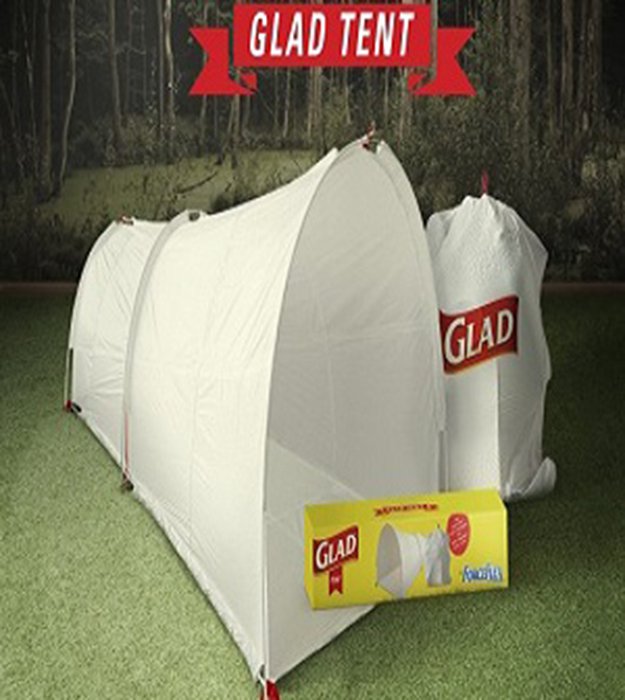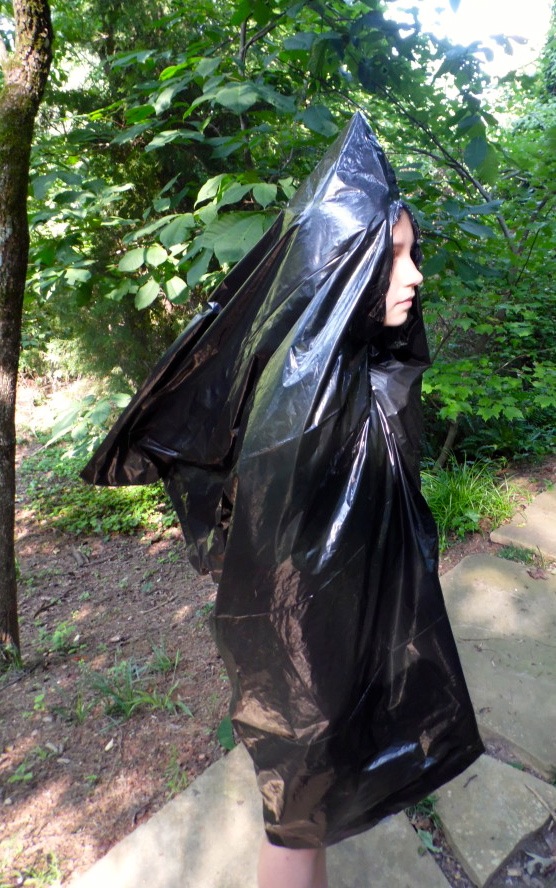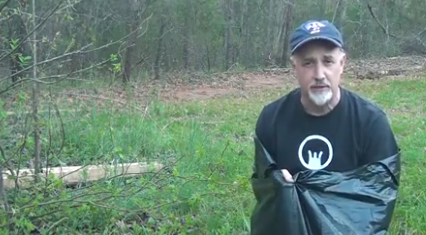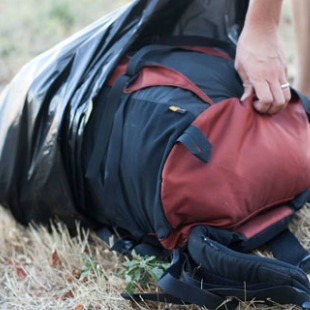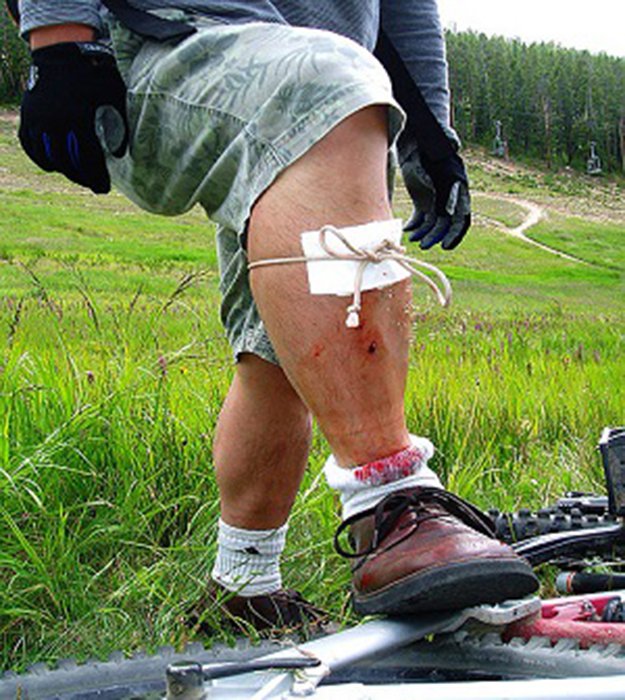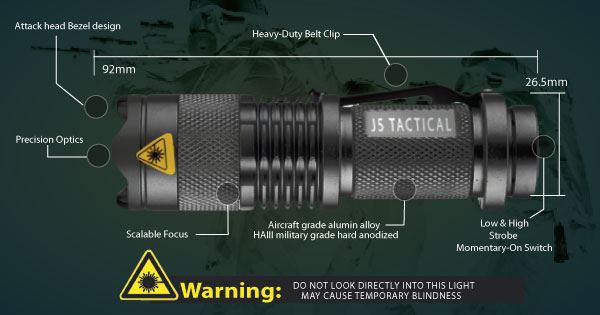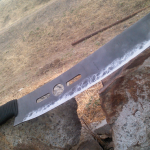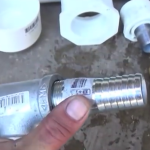Trash bags are one of the most economical prepper “to do” list finds and literally dozens of potential disaster uses. In addition to being easy on the budget, trash bags are lightweight yet durable and take up very little space in bugout bags, INCH bags, and get home bags.
Top 30 Uses For Trash Bags
Put in bug out or get home bag to use as a poncho. Simply cut or carefully tear a hold for the head and even the arms, and one poncho is coming right up.
Packing a tent or tarp for an emergency shelter is of course optimal — but such items take up a lot of space and are heavier as well. Even a one-person tent will not fit in a child’s backpack, but a trash bag and some duct tape surely will.
Trash bags are also useful in keeping your shoes and feet dry. Open a trash bag, step inside and tie or secure with duct tape and keep rain and snow at bay. Storing several trash bags for emergency booties and a poncho inside a get home bag or bugout bag takes up very little space and adds virtually no weight to the pack.
Keep your spare socks, change of clothes, and blankets dry with trash bags. The bags used to store these items can be turned into a poncho, bootie, or emergency shelter in mere minutes.
During either a short or long-term disaster, trash bags can be used to safely store waste when commodes are not working. The bags work equally well for sharps and bloody cloth or bandages used to treat wounded. Preventing the spread of disease becomes even more important during a teotwawki scenario.
Keep the rain off or your head with a makeshift trash bag hat.
Make a fly screen for the front of your shelter with a trash bag — or two. Cut the trash bag into a sheet type form and then cut slits within a few inches of the top of the bag and you have a protective screen to keep the bugs away.
Trash bags also make great ground cover. If you are using a tarp, or another trash bag for a shelter, placing another plastic bag onto the ground will prevent dampness from impacting your clothing. The trash bag also offers another layer between you at bugs which will come out of the ground seeking a food during the evening and early-morning hours.
Although not exactly soft, trash bags can be used like thermal underwear under your clothing. Tape or tie piece of the bag around your legs, arms, and stomach beneath your clothing to prevent body heat from escaping quite so easily.
Sure, they will be a bit flimsy and perhaps messy, but trash bags can be used to mix food or drink ingredients.
Trash bags have also been successfully used as part of a solar water still.
Although this is not US Coast Guard approved, some folks have reported success with trash bag life jackets — it is at least worth a shot during an emergency. Tie the ends of the trash bag together and blow air into it to inflate, then secure the open ends together as well. Tape or tie the back into a life jacket shape and use it to help keep your, your pets, or your get home bag afloat.
Trash bags can also be used to supplement water in the desert.
Give your head a somewhat soft place to rest during an overnight hike home by inflating a trash bag and using it as a pillow.
Trash bags can also be used as an emergency water container. The bags will hold a decent amount of weight, but will need to be carried carefully so the plastic does not tear and the water spill out onto the ground.
Keep your sleeping bag and yourself dry and a little warmer by using a trash bag as a cover. To stay extra dry, slip into a sleeping bag like you would a potato sack for a race before getting into the sleeping bag as well.
Mylar emergency blankets are inexpensive, lightweight, and take up little space, but trash bags can be used as a good substitute if more injured than expected need to be protected from the elements or shock.
Trash bags can be hooked onto branches, or taped into place, to make a temporary sun shade. After taking the hiking break, carefully fold the trash bag into a small square so it can be used again during the next break period.
Trash bags can also be used as a pressure bandage or a triangle bandage. The bags can also simply be used to cover a traditional bandage to help protect the wound from exposure to dirt or the bandage from exposure to the rain.
Tie a splint with a trash bag, double the bag or tape two together to make a sturdier splint.
Make emergency cordage .
In addition to being used as a makeshift water carrier, trash bags can also be used as a catch basin for water. Tie the bag to something mildly sturdy in an area exposed to the sky, or line a bucket or similar item with the bag, and capture enough water to keep yourself hydrated.
Trash bags can also be used as patching for leads in other food and water containers. The plastic bags can be taped to cover worn spots or tears in bug out or get home bags too.
Use trash bags to signal help. Tie or secure a white trash bag to a rock in a visible spot to let others know where you are. It is always a good idea to carry a permanent marker and spray paint to write messages.
Trash bags can be used as plates. Find the most smooth and flat rock in the near vicinity and place a piece of the trash bag onto the rock for a clean eating surface.
Use trash bags to tie onto trees for trail markers.
Make a windsock with a trash bag.
If an injured person, pet, or heavy gear needs to be moved, make a liter and line it with several trash bags.
Make a banner with the trash bag to leave warning notes for others or to mark unsafe buildings. Tape, string, and marking materials will also be required.
Fill a trash bag up with water, sit it in the sun for a while and then hang it from a sturdy branch to use for a shower. Heated water is also useful for cleaning wounds.
Make a temporary backpack with a trash bag so the non-prepared person you come across during your trek home can help you carry the load. Be warned, the person could run off with your stuff, but if they are scared and unaware and you appear full of knowledge, the person will likely stick to you like glue.
When packing the kiddos off to school, do not forget to include a few trash bags and other essential emergency items in their little backpacks as well. If your child or grandchild ever needs to spend the night at school or hoof it home or to a designated meeting spot, a few age-appropriate preps could be a life-saver.
By Tara Dodrill



